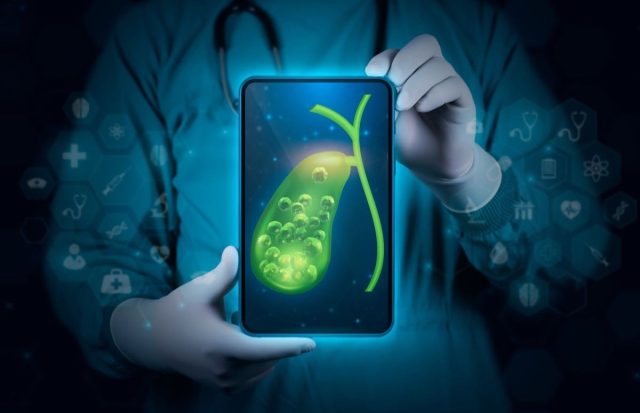For patients with benign biliary disease and difficult bile duct cannulation, techniques have similar success rates
By Elana Gotkine HealthDay Reporter
TUESDAY, Aug. 27, 2024 (HealthDay News) — For salvage for biliary access in patients with benign biliary disease and difficult bile duct cannulation, the endoscopic ultrasound-guided rendezvous technique (EUS-RV) and precut sphincterotomy have similar success rates and comparable, acceptable complication rates, according to a study published online Aug. 27 in the Annals of Internal Medicine.
Arup Choudhury, M.D., from the Postgraduate Institute of Medical Education and Research in Chandigarh, India, and colleagues compared EUS-RV and precut sphincterotomy as salvage techniques for difficult bile duct cannulation in benign biliary obstruction in a parallel-group, superiority, randomized controlled trial. Patients were randomly assigned to EUS-RV or precut sphincterotomy (50 patients to each group); those with failure in EUS-RV were crossed over to precut sphincterotomy and vice versa.
The researchers found that the two groups had similar technical success rates (92 versus 90 percent; relative risk, 1.02; 95 percent confidence interval, 0.90 to 1.16), median procedure times (10.1 versus 9.75 minutes), and overall complication rates (12 versus 10 percent; relative risk, 1.20; 95 percent confidence interval, 0.39 to 3.68). Five patients in the EUS-RV and five in the precut sphincterotomy groups developed postendoscopic retrograde cholangiopancreatography pancreatitis. When crossed over to the other group, all failed cases in either salvage group could be successfully cannulated.
“EUS-RV is not superior to precut sphincterotomy as a salvage technique for difficult bile duct cannulation in benign biliary diseases, and has a similar adverse event profile to precut sphincterotomy,” the authors write.
Copyright © 2024 HealthDay. All rights reserved.



















